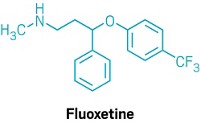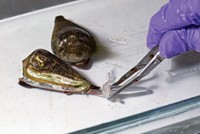Advertisement
Grab your lab coat. Let's get started
Welcome!
Welcome!
Create an account below to get 6 C&EN articles per month, receive newsletters and more - all free.
It seems this is your first time logging in online. Please enter the following information to continue.
As an ACS member you automatically get access to this site. All we need is few more details to create your reading experience.
Not you? Sign in with a different account.
Not you? Sign in with a different account.
ERROR 1
ERROR 1
ERROR 2
ERROR 2
ERROR 2
ERROR 2
ERROR 2
Password and Confirm password must match.
If you have an ACS member number, please enter it here so we can link this account to your membership. (optional)
ERROR 2
ACS values your privacy. By submitting your information, you are gaining access to C&EN and subscribing to our weekly newsletter. We use the information you provide to make your reading experience better, and we will never sell your data to third party members.
Biological Chemistry
Asthma patients could stop wheezing thanks to worm spit
Protein secreted by hookworms helps block immune responses associated with asthma in mice
by Michael Torrice
October 26, 2016
| A version of this story appeared in
Volume 94, Issue 43

A bloodsucking parasitic worm that latches onto the lining of our gut doesn’t sound like a helpful organism. But a new study suggests that the spit from such a parasite could inspire treatments for inflammatory diseases such as asthma.
An international team of researchers report that a protein secreted by hookworms reduces inflammation in the lungs of asthmatic mice (Sci. Transl. Med. 2016, DOI: 10.1126/scitranslmed.aaf8807). The protein works not by suppressing the mouse’s entire immune system, but by regulating only certain immune cells involved in allergic responses. This feat suggests that the molecule could lead to relatively safe therapeutics.
“Right now we use a lot of drugs with potent side effects that can make people immunocompromised,” says Joel V. Weinstock of Tufts University School of Medicine, who was not involved in the work. “If we could understand these pathways that a little old worm uses, then there is the possibility to develop powerful but very safe drugs.”
Weinstock was one of the first scientists in the 1990s to draw a possible connection between parasitic worms, known as helminths, and inflammatory diseases such as asthma, ulcerative colitis, and allergies. He and other researchers noticed that, in the developed world, improved sanitation made worm infections almost nonexistent, while the incidence of these immune diseases had increased significantly. That and other data led the scientists to wonder if the absence of the parasites disrupted the regulation of some people’s immune systems.
In these increasingly common diseases, a person’s immune system lashes out at typically innocuous substances, such as pollen or even the body’s own cells, leading to harmful inflammation. Recently, several clinical trials have shown that infecting patients with some parasitic worms can reduce that chronic inflammation.
But a treatment based on infecting people with parasites presents many problems. Severine Navarro, who is a research fellow in Alex Loukas’s lab at James Cook University, and colleagues decided to go looking for an alternative.
In particular, they searched for a molecular explanation for how hookworms can invade our guts, feed off our red blood cells for years, and never get rejected by our immune systems. The team focused on a soup of molecules that hookworms secrete when they invade a host. The scientists wondered if some of those molecules programmed the hosts’ immune system to stand down.
AIP-2, a protein they found in the secretion soup, reduced signs of airway inflammation and improved lung function in mice given an asthmalike condition. Further experiments suggested that the protein works through promoting the development of immune cells that regulate cells involved in attacking allergens or the body’s own tissue. These regulatory cells calm those attackers.
Scientists are interested in finding therapeutics that can regulate the immune system, says Maria Yazdanbakhsh, who studies parasitic infections at Leiden University. This hookworm study “will influence the field by showing that it is valuable to invest in characterizing molecules from organisms that have immune modulatory properties.”
Navarro says she and her colleagues are sifting through the worm’s secretions to find other immune-modulating molecules. They are also working on producing a smaller version of AIP-2 that retains its activity but would be easier to produce and deliver as a therapeutic.
The team plans to further study AIP-2’s mechanism to better understand how it fine-tunes our immune system to tamp down allergic responses.
Weinstock thinks such studies will help guide further drug development. “When we learn how an organism evades our immune system,” he says, “we learn something about our immune response, things we didn’t know before.”




Join the conversation
Contact the reporter
Submit a Letter to the Editor for publication
Engage with us on Twitter